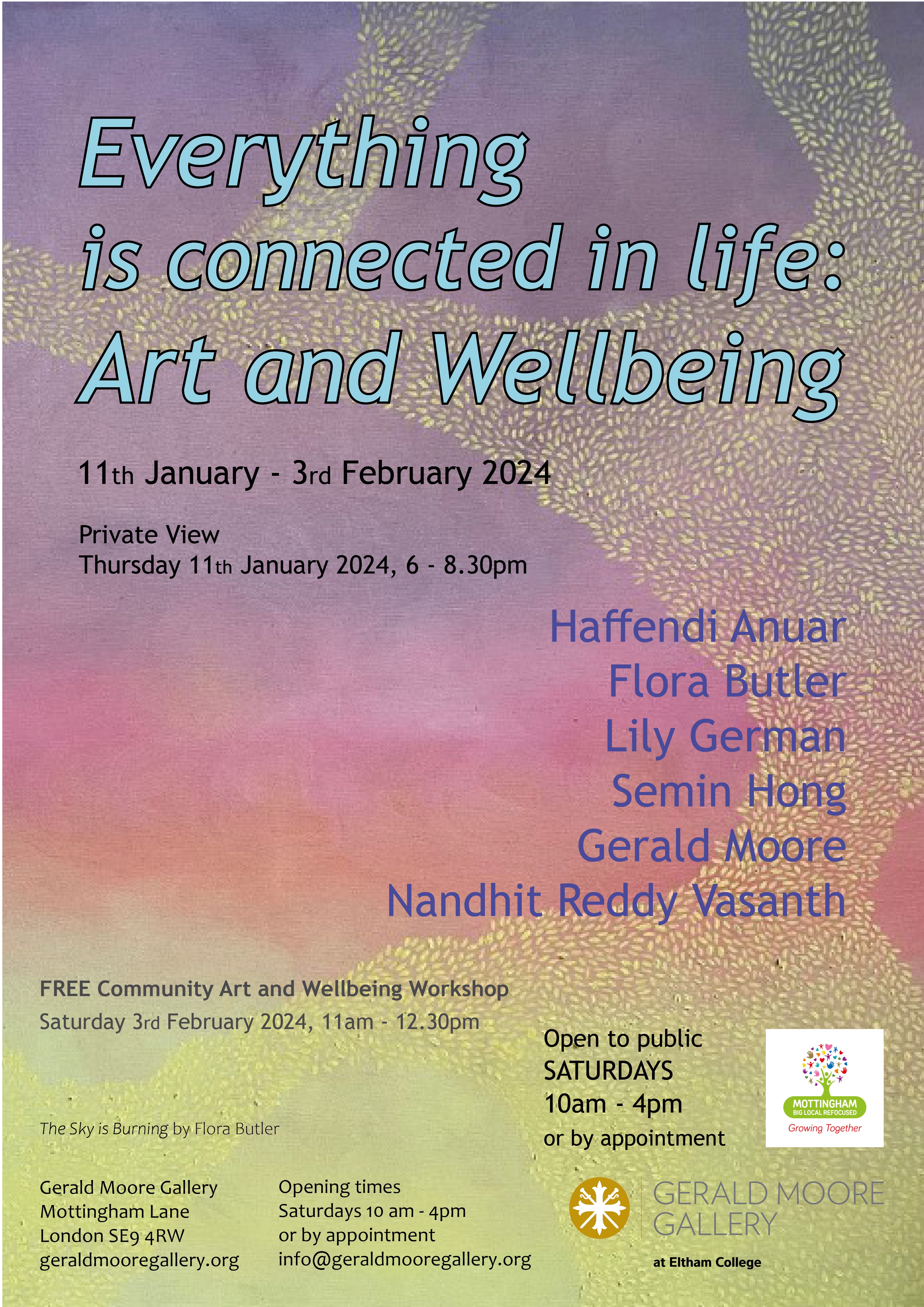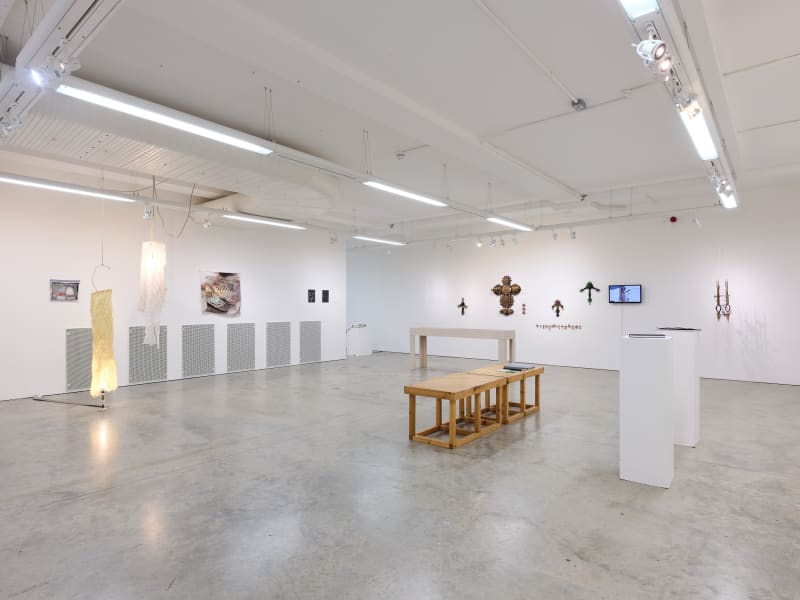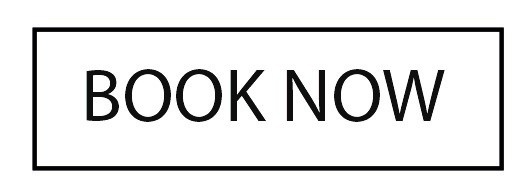The Gerald Moore Gallery is delighted to present Everything is connected in life: Art and Wellbeing, an exhibition that serves as a conclusion to the gallery’s 3-year Art Therapy and Wellbeing in Schools Project as well as exploring connections between art and mental wellbeing in three emerging artists’ works. The title of the exhibition is inspired by a hand-written statement by an unnamed man in Gillian Wearing’s photographic work Signs that Say What You Want Them To Say and Not Signs that Say What Someone Else Wants You To Say1992–1993 (1997). The exhibition will run from 11 January to 3 February 2024. The Private View is on Thursday 11 January from 6 - 8.30pm.
The gallery is open to the public Saturdays 10am - 4pm or by appointment for other days.
Arts in health interventions by practicing artists in gallery spaces and with collections are increasingly recognized as invaluable ways to support people’s wellbeing outside of clinical settings. Clinical art therapy into museums and galleries is an emerging area of international practice. The Gerald Moore Gallery has combined these approaches in our innovative Art Therapy and Wellbeing in Schools Project that was generously supported by Mottingham Big Local Refocused. Over the past 3 years, we have worked with 3 primary state schools in the Mottingham Big Local area to support the emotional wellbeing of pupils and their teachers during the Pandemic and beyond using art. Everything is connected in life: Art and Wellbeing will showcase this exciting project and how the gallery artworks, and setting has contributed to people’s wellbeing in the schools.
Art therapist Elaine Homer has worked closely with the gallery exhibitions and artworks together with staff from partner schools to provide art therapy groups for pupils with complex needs who would not receive statutory support. Homer has selected 5 art works that were previously exhibited at the gallery by Lily German, Haffendi Anuar and Gerald Moore that particularly resonated with group members and will offer her perspective on the significance of the works to the art therapy process.
Haffendi Anuar, gallery and project manager/artist has worked with a range of artists to provide experiential workshops for teachers about using Art for their own Wellbeing. These sessions provided activities that teachers can subsequently share with pupils to create a ripple effect on the wellbeing of the wider school community.
The exhibition also features new art works by Flora Butler, Semin Hong and Nandhit Reddy Vasanth that directly explore wellbeing through their art in the forms of textile sculptures, interactive kinetic art, and painting.
And exhibition text written by the art therapist can be downloaded HERE.
As part of the supporting programme, the gallery will host art and wellbeing workshops for staff and students at Eltham College and members of the local community. On Saturday 3 February 2024, there will be a public wellbeing workshop run by the artists, more details will be announced.
To book your visit, please click on the link below:

Art therapist/co-curator
Elaine Homer is a UK, HCPC registered art psychotherapist and member of BAAT. Homer works in schools and the wider community to facilitate individual and group art therapy to enable people to express through art what may be difficult in words. She has explored the potential of Museums and Galleries for Art Therapy working with various partners. Homer has co-authored Starting with Art in (Coles and Jury, 2020) Art Therapy in Museums and Galleries: Reframing Practice, about her experiences using art works from the Ben Uri Collection as a stimulus in group art therapy for older people living with dementia. She has a background in Media Education supporting the professional development of teachers.
Artists
Haffendi Anuar current work looks at the kain pelikat, its origin, usage within social settings, visual patterns, and formal structure. Oriented in relation to his childhood memories of encountering and being enveloped by the fabric, his research and exploration into the iconography of the garment encompasses personal family photos, archival photographs, images from social media and the Internet. He creates sculpture constructions, installations, drawings, and paintings with the materials gathered.
Flora Butler is a London based artist who graduated with a 1st-class degree from the University of The Arts London in 2018. She has since founded the community-focused publishing company The Mindful Editions, worked with charity Chayn to facilitate a series of creative workshops for survivors of gender-based violence and continues to develop her painting practice. Butler’s work focuses on the intricate patterns present in nature and highlights their beauty. Inspired by images of cells from different mushrooms and plants, her paintings play with shape and texture, using different mediums to create depth and form. She has had pieces exhibited in galleries across the UK, taken part in numerous group shows, and held her first solo show, Aria, in Hackney at the start of 2022.
Semin Hong (b. 1995) is a South Korean artist who lives and works in London, UK. She studied MA Fine Art at UAL Chelsea College of Arts in London and BFA Painting at Hongik University in Seoul. She was previously an artist in residence at Sarabande Foundation (est. Lee Alexander McQueen) and now is in The Bomb Factory Art Foundation.
Hong's work starts from the belief that every space anyone has ever lived in, whether it's called home, shelter, or without a name, is inscribed with memory and always left with indecipherable traces and marks. In her work, the elements of home -whether they are architectural fragments or gestures extracted from ritualistic actions taking place in domestic space- are isolated and inserted into the new context. By building a temporary shelter in a gallery and using repeated motifs from her childhood memory, she attempts to navigate immigrant identity and belongingness entwined with the concept of home.
Lily German is an artist based in London. Her work explores the shared fragilities and tactility of wet clay, ceramic and the voice. German solidifies passing, palpable, bodily moments and movements into her work; hands push in, fingers break through the clay’s cold flesh. Each mark made remains, becomes preserved in ceramic form. Pressing at the limits of material, German’s sculptures hold within them the anticipation of their own breaking. Like clay, the voice breaks, is vulnerable if not supported. At times guttural and other times soft, whispering, German uses sung and spoken elements to communicate emotion and physicality in performance and writing. Both the untrained and trained voice are used to speak to the human experience of grief and loss.
Dr. Gerald Moore was a prolific artist who worked across the mediums of sculpture, painting, and drawing. His career as an artist evolved over several decades. Since 1950, he exhibited his work widely, including at Whitechapel Gallery (1950), the Scottish National Gallery (1959), at Heal's Gallery with David Hockney (1961), Bath Festival (1982) and Cooperative K (Germany, 1994). The largest single collection of his work is now housed within the walls of Gerald Moore Gallery and works can be viewed on display at all times.
Alongside his work as an artist, Dr. Moore published several written works. This includes an anthology of poems entitled The Singing Dust (1976), children's book The Cuckoo Who Flew Backwards (1977) and in 1982 he published his autobiography, Treading in Treacle. He passed away in March 2018 at the age of 91.
Nandhit Reddy Vasanth is a multidisciplinary artist, designer, and an MA [Art & Science] graduating student from Central Saint Martins with a background in architecture. His practice explores experiential design and existentialism through products, installation, sculpture, and mark-making. Growing up in Bangalore, India, he recognised a keen interest in both art and science and pursued architecture as a career. His motivation is to invite audiences to interact with his kinetic models where the movement of the various parts causes intrigue. In the age of information overload, his aim is to distract or mesmerise people of all ages through play. Vasanth’s work aims to address the challenge of high functioning anxiety by incorporating mythological, and scientific concepts from across cultures and setting them in figurative atemporal installations and objects.
For more information, images, and interview requests, or to attend the Private View
please contact: Haf Anuar at info@geraldmooregallery.org
Geraldmooregallery.org
Instagram: @thegeraldmooregallery
Facebook: @geraldmooregallery
Twitter: @geraldmooregall


